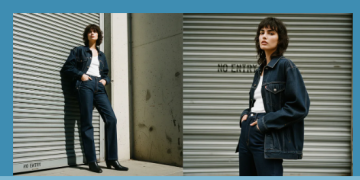
Fashion is an ever-evolving art form that allows individuals to express their personality and creativity. However, navigating the world of style can be challenging, and even the most seasoned fashion enthusiasts can fall prey to common pitfalls. This article explores frequent fashion mistakes, offering practical advice on how to avoid them and enhance your overall style.
Understanding Fashion Mistakes
The Role of Fashion Mistakes
- Personal Impact: Fashion mistakes can impact how others perceive you and how you feel about yourself. A misstep in style can undermine confidence and affect self-expression.
- Fashion Evolution: Recognizing common fashion mistakes helps individuals evolve their style, making informed choices that reflect personal taste and current trends.
Common Fashion Pitfalls
Fashion mistakes can range from poor fit to mismatched outfits. Understanding these pitfalls is the first step toward improving your wardrobe and making better fashion choices.
Common Fashion Mistakes and How to Fix Them
Wearing Ill-Fitting Clothes
- Problem: Clothes that are too tight or too loose can detract from your appearance and comfort. Ill-fitting garments may cause discomfort and undermine your overall look.
- Solution: Invest in tailoring. Clothes that fit well can transform your appearance. A good tailor can adjust hems, take in waistlines, and ensure that garments flatter your body shape.
- Tailoring Tips: When purchasing new clothes, focus on fit rather than size. Opt for pieces that can be easily adjusted to your measurements. Establish a relationship with a skilled tailor who understands your style preferences.
Overloading on Trends
- Problem: Following every fashion trend can lead to a cluttered and incoherent wardrobe. Overloading on trends often results in an unbalanced look and can make you appear less stylish.
- Solution: Select trends that complement your personal style. Incorporate trendy pieces sparingly, focusing on elements that enhance your existing wardrobe rather than overwhelm it.
- Trend Management: Choose one or two trends to integrate into your wardrobe each season. Pair trendy items with classic pieces to create a balanced and timeless look.
Neglecting Personal Style
- Problem: Ignoring your personal style in favor of what’s fashionable can result in a wardrobe that doesn’t reflect who you are. Wearing clothes that don’t resonate with your personality can make you feel uncomfortable and less confident.
- Solution: Develop and embrace your personal style. Understand what colors, cuts, and fabrics work best for you, and build a wardrobe around these preferences.
- Style Discovery: Experiment with different styles and looks to determine what makes you feel most comfortable and confident. Pay attention to what you enjoy wearing and what makes you stand out.
Wearing the Wrong Colors
- Problem: Wearing colors that don’t complement your skin tone can make you look washed out or enhance imperfections. Colors play a significant role in how clothes enhance or detract from your appearance.
- Solution: Identify your best colors based on your skin tone, hair color, and eye color. Use color analysis to choose hues that enhance your natural features and create a harmonious look.
- Color Matching: Consult a color guide or take a personal color analysis to determine your ideal palette. Incorporate these colors into your wardrobe for a more flattering and cohesive style.
Inappropriate Footwear Choices
- Problem: Wearing shoes that don’t match the occasion or the rest of your outfit can ruin your overall look. Footwear choices should align with the formality and style of your outfit.
- Solution: Choose footwear that complements both your outfit and the event. Invest in versatile styles that can transition between different settings and occasions.
- Footwear Selection: Ensure your shoes are appropriate for the occasion, whether casual, formal, or professional. Invest in classic styles like loafers, pumps, and boots that can be worn across various outfits.
Over-Accessorizing
- Problem: Over-accessorizing can clutter your look and detract from your outfit. Too many accessories can make an outfit appear chaotic and overwhelming.
- Solution: Practice moderation with accessories. Select one or two key pieces that complement your outfit and avoid layering multiple accessories that compete for attention.
- Accessorizing Tips: Choose accessories that enhance your outfit without overshadowing it. Focus on statement pieces or minimalist designs based on the overall style of your ensemble.
Ignoring Fit and Proportion
- Problem: Wearing clothes that don’t fit well or that are not proportioned correctly can create an unflattering silhouette. Proper fit and proportion are crucial for a polished appearance.
- Solution: Pay attention to the fit of your garments and ensure they are well-proportioned to your body shape. Opt for pieces that enhance your natural silhouette and avoid overly loose or tight items.
- Fit Focus: Choose clothes that highlight your best features and create a balanced silhouette. Experiment with different cuts and styles to find what works best for your body shape.
Skipping Proper Maintenance
- Problem: Neglecting to care for your clothing can lead to premature wear and tear. Clothes that are poorly maintained can lose their appearance and fit over time.
- Solution: Follow proper care instructions for washing and storing your garments. Regularly inspect and repair any damage to extend the lifespan of your clothing.
- Garment Care: Read and follow care labels for washing and drying instructions. Store clothes properly to avoid wrinkles and damage. Repair any small issues promptly to maintain your wardrobe.
Mismatching Patterns and Textures
- Problem: Combining patterns and textures that clash can create a disjointed and visually unappealing outfit. Properly mixing patterns and textures is key to a cohesive look.
- Solution: Learn the art of mixing patterns and textures by starting with simple combinations. Choose patterns and textures that complement each other and create a harmonious look.
- Pattern Mixing: Start with one patterned piece and pair it with solid colors or subtle patterns. Experiment with different combinations to find what works best for your style.
Underestimating the Power of Fit
- Problem: Clothes that are either too loose or too tight can impact your overall appearance and comfort. Proper fit is essential for looking polished and feeling confident.
- Solution: Prioritize fit when shopping for clothes. Opt for garments that flatter your body shape and provide comfort. Tailor pieces as needed to achieve the perfect fit.
- Fit Essentials: Focus on the fit of key areas such as shoulders, waist, and hips. Make sure garments move with you and enhance your natural shape.
Neglecting Occasion Appropriateness
- Problem: Wearing inappropriate clothing for specific occasions can affect how you are perceived and your comfort level. Choosing the right outfit for the event is essential for making a positive impression.
- Solution: Dress appropriately for each occasion by considering the dress code and setting. Tailor your outfit choices to match the formality and context of the event.
- Occasion Dressing: Familiarize yourself with different dress codes and choose outfits that align with them. For formal events, opt for elegant and polished pieces, while casual events allow for more relaxed styles.
Over-Reliance on Black
- Problem: While black is a classic and versatile color, relying solely on it can make your wardrobe appear monotonous. Incorporating other colors can add variety and vibrancy to your outfits.
- Solution: Introduce a range of colors into your wardrobe to create dynamic and engaging outfits. Experiment with different hues to find what complements your skin tone and style.
- Color Variety: Mix and match black with other colors to create visually appealing ensembles. Explore different color palettes and incorporate them into your wardrobe for added interest.
Inconsistent Wardrobe Maintenance
- Problem: An inconsistent wardrobe maintenance routine can lead to clutter and disorganization. A well-organized wardrobe facilitates better outfit planning and reduces stress.
- Solution: Regularly organize and declutter your wardrobe. Keep track of your clothing items and assess your wardrobe periodically to make necessary updates and changes.
- Wardrobe Organization: Implement a system for organizing your clothes, such as by category or color. Regularly review and declutter to maintain an efficient and organized wardrobe.
. Developing a Personal Style
Self-Assessment
- Identify Your Style: Understand your personal style preferences and how they align with current trends. Assess what makes you feel confident and comfortable in your clothing choices.
- Experiment and Refine: Experiment with different styles and outfits to discover what suits you best. Refine your wardrobe based on your preferences and lifestyle needs.
Building a Versatile Wardrobe
- Essentials and Basics: Invest in wardrobe essentials and basics that form the foundation of a versatile wardrobe. These pieces can be mixed and matched to create a variety of looks.
- Statement Pieces: Incorporate statement pieces that reflect your personal style and add interest to your outfits. Balance these with classic items to maintain a cohesive and stylish wardrobe.
Fashion Education
- Stay Informed: Keep up with fashion trends and industry developments to stay informed about new styles and innovations. Follow fashion blogs, magazines, and social media for inspiration.
- Seek Professional Advice: Consider consulting with a personal stylist or fashion consultant for personalized advice and guidance. Professional input can help you navigate fashion choices and build a wardrobe that suits your needs.

Avoiding common fashion mistakes requires awareness and a proactive approach to style. By addressing issues such as ill-fitting clothes, overloading on trends, and neglecting personal style, individuals can enhance their fashion choices and build a wardrobe that reflects their unique personality. Embracing proper fit, color selection, and occasion-appropriate dressing ensures a polished and confident appearance. Developing a personal style and maintaining an organized wardrobe further contribute to a successful and satisfying fashion experience. As you refine your approach to fashion, remember that style is a journey of self-expression, creativity, and continuous growth.










